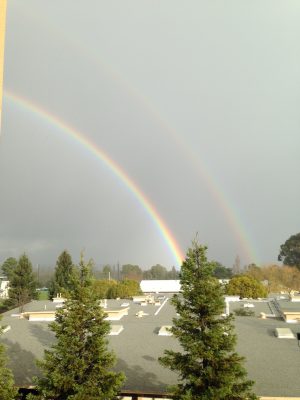The normally mild winters of the Golden State are no more. The booming thunder and torrential rain of recent weeks were unlike any weather California had seen for at least half a decade.
Although a record-breaking 218% of normal precipitation has fallen so far this winter season, it still may not be enough to end California’s five-year long drought.
California has been hit by a series of storms, starting in early January and continuing up to January 23rd. Reservoirs that were as low as 15% of their total capacity in January 2016, are now up to 80% of capacity. The second largest reservoir in California, Lake Oroville, received 21-feet of water in 24 hours.
Still, those storms may not end the drought once and for all.
AP Environmental Science teacher Ann Akey weighs in on this issue: “For this year, yes [the storms will impact the drought]. I don’t know that there’s enough to do a long term. I don’t think it’s going to catch us up with groundwater, but surface water, yes.”
While the increase in surface water, which is water in reservoirs, lakes, and rivers, will help to somewhat alleviate the drought, the groundwater, or water found in underground aquifers or soil, will not fully rebound from this series of storms.
Jill Baumgartel, the Science Department Chair, agrees with Akey that the storms will not have that much of a long term impact: “Obviously, I think we’ve made a dent, but I think we’re still far away.”
Even though 40% of California is not in drought-like conditions, the Drought State of Emergency, in effect since January 2014, has not been revoked by Governor Jerry Brown yet. Most of Southern California is still in a severe drought or higher, especially in the Los Angeles area.
Akey states, “The danger is that people think, ‘oh the drought’s over, I can go back to using water without thinking about it,’ and we really shouldn’t be doing that.”
Another big factor in determining if the drought is really busted is the Sierra Nevada Snowpack, the main water provider in the summer months. The stability and longevity of the snowpack have come into question with global warming on the rise.
“We’ve had a lot of snow in the Sierras recently, but temperatures are also warmer in the Sierras,” Akey states, regarding the snowpack, “The question is will our snowpack actually stay there, or is it going to melt away and run off.”
The recent storms in California, although helpful in alleviating the drought and refilling reservoirs, may not make that much of an impact on the drought as a whole, especially in Southern California. The long term effect of these storms also hinges on how fast the snowpack melts.
“For right now and for surface water, we are doing really well,” says Akey, “The question is getting the aquifers recharged and long term is the snowpack.”





